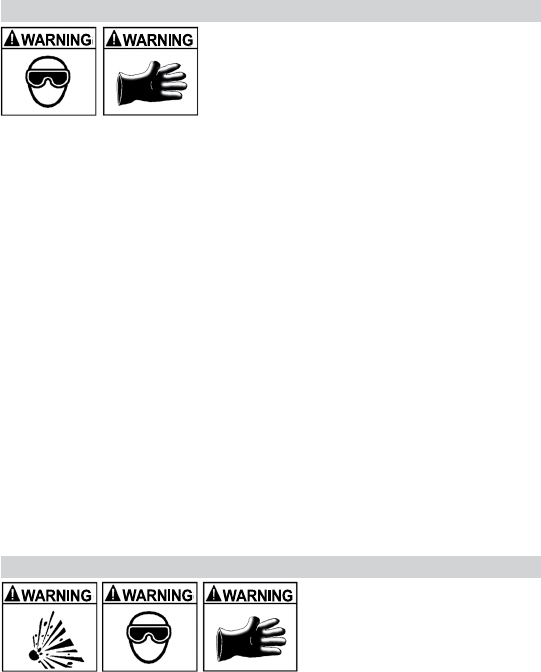
• 5 •
3. PREPARING TO CHARGE
RISK OF CONTACT WITH BATTERY ACID.
BATTERY ACID IS A HIGHLY CORROSIVE
SULFURIC ACID.
3.1 If it is necessary to remove the battery
from the vehicle to charge it, always remove
the grounded terminal rst. Make sure all of
the accessories in the vehicle are off to prevent arcing.
3.2 Be sure the area around the battery is well ventilated while the
battery is being charged.
3.3 Clean the battery terminals before charging the battery. During
cleaning, keep airborne corrosion from coming into contact
with your eyes, nose and mouth. Use baking soda and water to
neutralize the battery acid and help eliminate airborne corrosion.
Do not touch your eyes, nose or mouth.
3.4 Add distilled water to each cell until the battery acid reaches the
level specied by the battery manufacturer. Do not overll. For
a battery without removable cell caps, such as valve regulated
lead acid batteries (VRLA), carefully follow the manufacturer’s
recharging instructions.
3.5 Read, understand and follow all instructions for the charger,
battery, vehicle and any equipment used near the battery
and charger. Study all of the battery manufacturer’s specic
precautions while charging and recommended rates of charge.
3.6 Determine the voltage of the battery by referring to the vehicle
owner’s manual and make sure that the output voltage selector
switch is set to the correct voltage. If the charger has an
adjustable charge rate, charge the battery in the lowest rate rst.
3.7 Make sure that the charger cable clips make tight connections.
4. CHARGER LOCATION
RISK OF EXPLOSION AND
CONTACT WITH BATTERY
ACID.
4.1 Locate the charger as far
away from the battery as the
DC cables permit.
